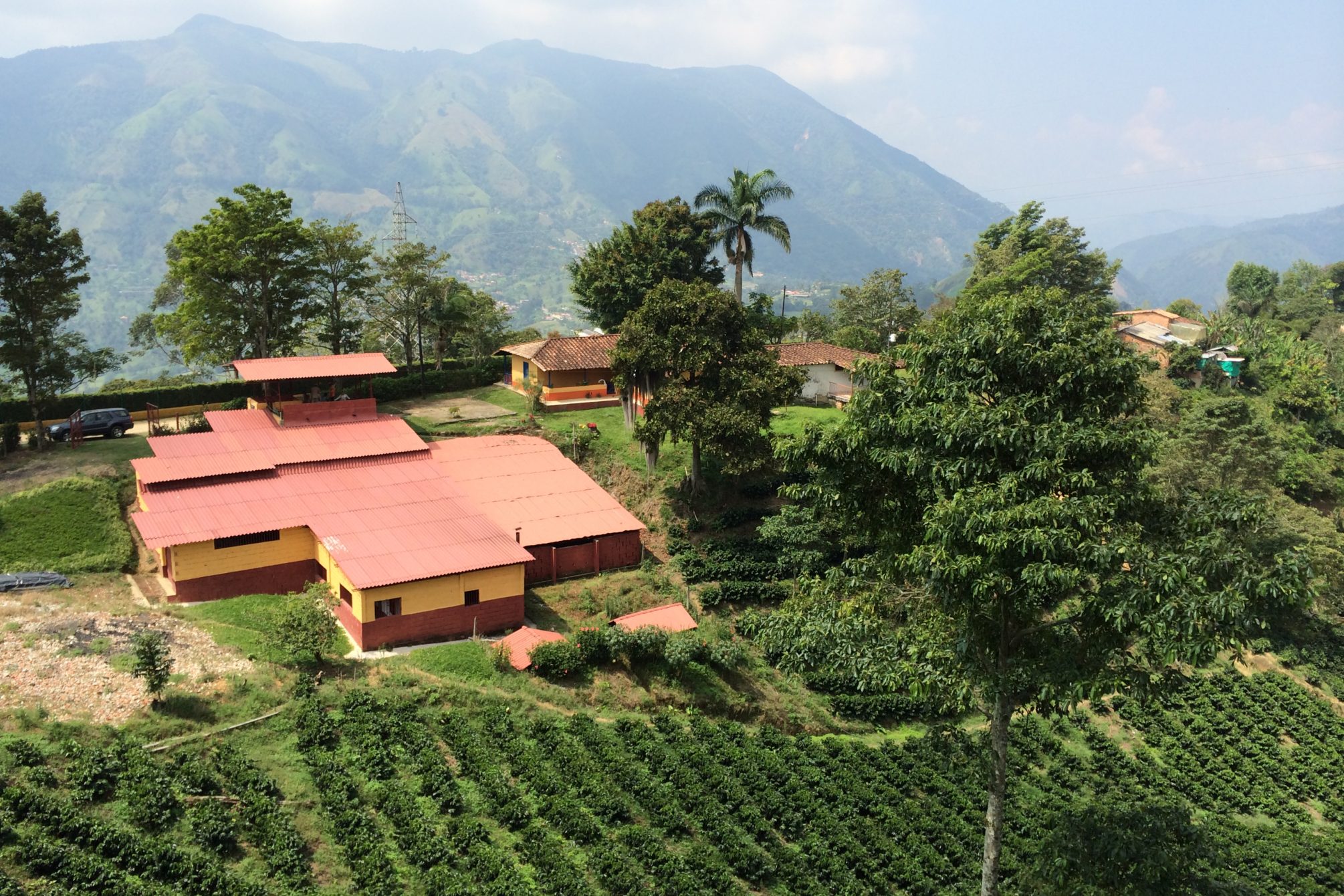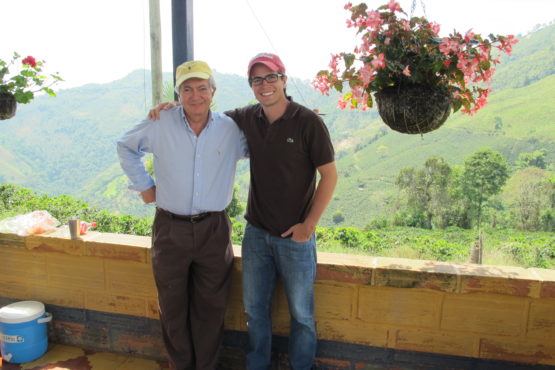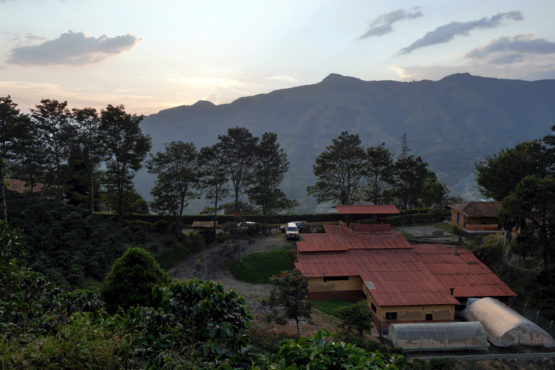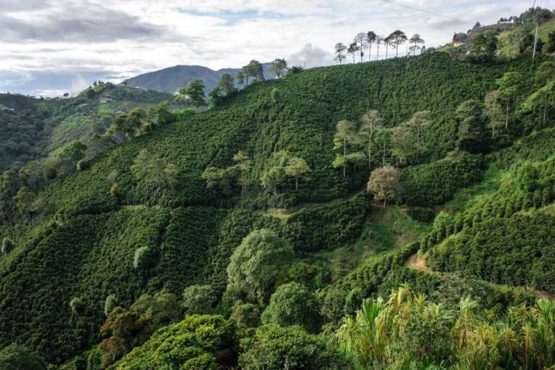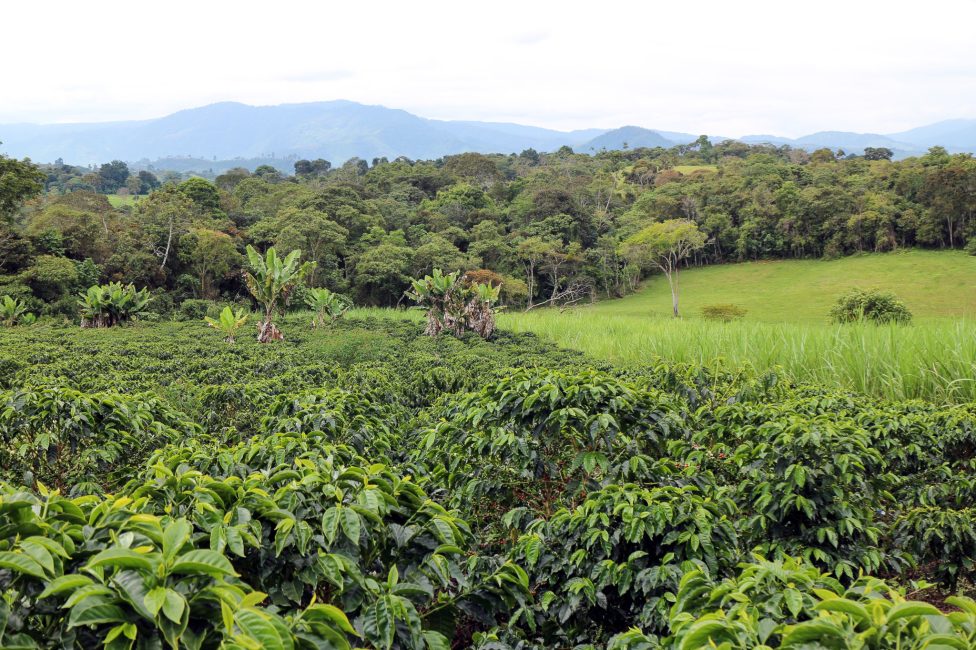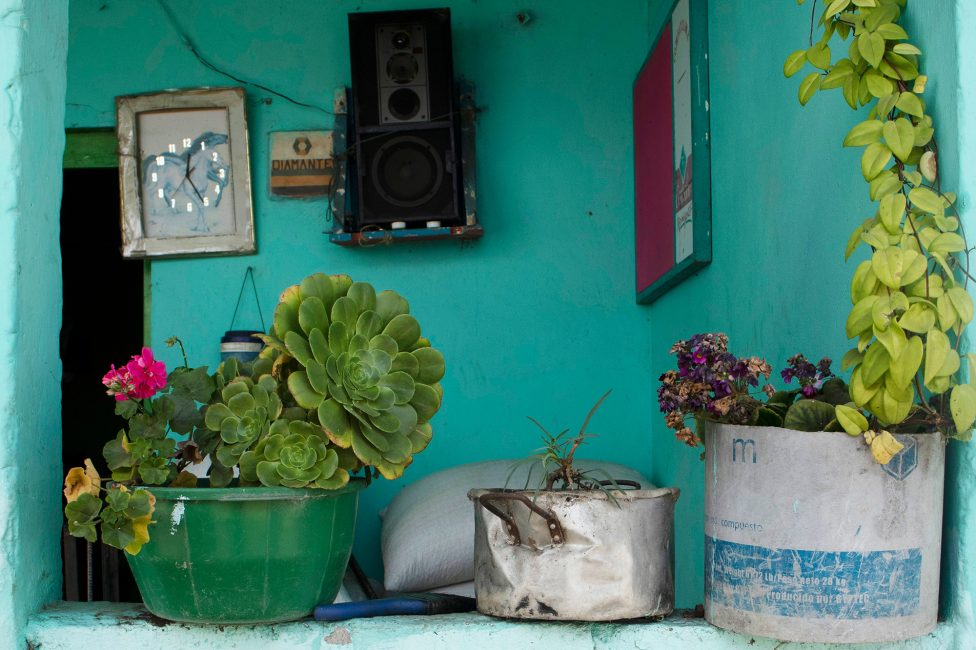Finca Veracruz
Rich with intense strawberry jam sweetness and notes of blackcurrant, black tea, toffee and stewed fruit.
Finca Veracruz was established by Sr. Pedro Echavarria in the 1980s. Pedro recognised from the start that selecting the right location for his farms was critical, and it was for this reason, that Pedro chose to grow coffee high up in the Andes in the Antioquia region, which had the perfect conditions to produce exceptional coffee, with a unique microclimate, rich volcanic soil and high altitude. By marrying these conditions with hard work, precision and efficiency, he quickly grew both the area under cultivation and his reputation.
Today Finca Veracruz is one of 5 sister farms that are owned by Pedro and his family, which come under the banner of Santa Barbara Estate. It sits at 1,650m above sea level, and has its own small mill located on the property, allowing the Echavarria family to control quality on the farm from picking through to drying.
In the last five years, Pedro’s son – Pedro Jr. – has become more deeply involved in the workings of his family’s farm. Pedro Jr., who was educated at Tufts University, is taking the already high quality of the coffee to new heights through experimentation in processing and increased monitoring and control of every stage of production. Pedro Jr. works with the Director of Quality, Leonardo Henao Triana to manage their wet mill with a blend of art, industrial rigour and scientific curiosity. Leo, an agronomist, is also in the midst of completing his masters degree in fermentation processing at the National University’s Medellin branch. Pedro and Leo are committed to further developing the Estate’s capacity for the highest quality coffee possible and have even brought their offerings to Medellin, Colombia through their flagship coffee shop, Pergamino.
In addition to their quality control team, the Echavarria family employ 60 people all year round who on average earn 30% above the minimum wage. Half of these also receive free housing within the farm for themselves and their families, and many have worked for the family for a decade or more. A further 1,200 pickers are hired during the main harvest, comprised mainly of farmers from around the Santa Bárbara Estate who pick coffee to supplement their income. The Echavarria family run extensive scholarship and financial aid programs for their worker’s children as well as helping long-standing employees to acquire their own piece of land upon retirement.
To ensure workers only pick the very ripest cherries, the Echavarria family use a mix of education and economic incentives. They explain ‘We are working with our pickers to teach them why it is so important that they pick the fully ripened beans, as most of them have no idea of the effects of their job on the final product. We also complement this with a set of collective incentives. Throughout the day, we are taking constant measures of the quality of the picking, measuring what percentage of unripe beans we have. When this percentage reaches a certain point, a bonus kicks in, and then next day picking will be paid with a bonus. So far we have seen great results, and the mentality of the pickers has changed drastically.’
Pedro and Leo have developed a unique method of processing this coffee known as extended fermentation. Each day (over a period of 5 consecutive days), freshly picked, pulped beans are added to a fermentation tank with the previous days’ pickings. In this method of ‘extended’ fermentation, each batch raises the pH level of the fermentation tank (i.e. makes it more alkaline), permitting longer fermentation times that will produce a fruit-forward cup but without the acetic acid produced by bacteria at a low pH. In this way, Pedro is able to maintain the correct pH level and avoid very low pH levels during processing that can lead to over-fermentation. In addition to giving more control over pH levels, this method also gives more control over yeast and bacteria activity. Interestingly, the inspiration for the process was taken from small farmers throughout Antioquia and Huila, who often have two or three day fermentation as their farms are so small that one day’s picking is often not suffcient to make up an entire lot. Pedro and Leo have worked to perfect the process and adapt it for larger-scale production.
After fermentation, the coffee is then washed and dried on parabolic beds under the sun. These parabolic beds, known locally as ‘marquesinas’, are constructed a bit like ‘hoop house’ greenhouses, with air flow ensured through openings in both ends. The covering both protects the parchment from rain and mist as it is dried and also prevents condensation from dripping back on the drying beans. After the parchment is fully dried to the optimal humidity, it is delivered to Santa Barbara’s dry mill for assessment and storage.
